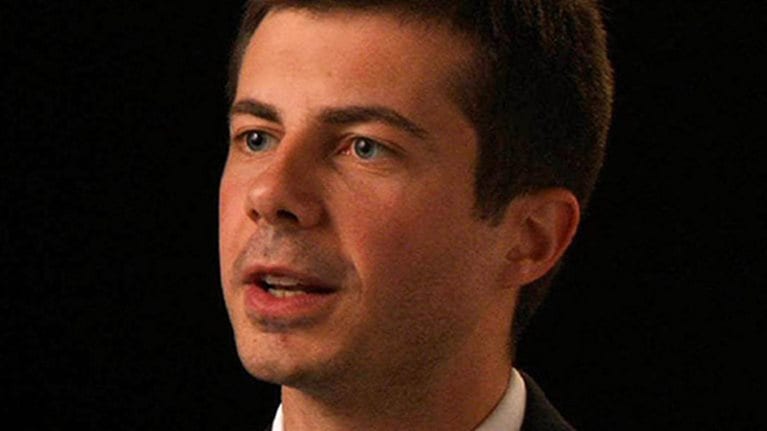From 2009 to 2013, during my tenure as director of the US Patent and Trademark Office (USPTO), I led a series of improvement initiatives primarily focused on instilling a service mentality within the agency. Not all federal agencies are service organizations, but many are, and for those agencies the USPTO’s experience may hold valuable lessons.
In the complicated world we live in today—where problems are interconnected, information is easy to access and changes quickly, and expertise is widely distributed—I believe government agencies will need to operate much differently than they have in the past. Broadly speaking, a service-oriented agency in the 21st century will apply customer-service principles already standard in the business community. This means that all aspects of the agency—from how the security guards treat visitors to the usability of the website to the way managers interact with employees—will be viewed through a service prism. The 21st-century agency will abandon an “only government experts can do it” mentality, relying instead on continuous outreach and partnering.
Specifically, successful agencies will do three things well: seek and respond to stakeholder input, organize to serve their employees, and take a user-centric approach to designing and implementing systems and solutions. I believe these changes can have real and lasting benefits for citizens, employees, and our national economy.
Seek and respond to stakeholder input
Engaging directly with the public can be difficult for government agencies. After all, everything the government says and does potentially creates liability, making agency leaders understandably wary: What if an employee writes the wrong thing, or does something offensive, or takes a point of view in conflict with agency policy? Receiving feedback from the public regularly requires the government to admit “we did not think of that” or “our efforts have not been completely successful.” Despite these challenges, the USPTO made every effort to solicit ideas, accept criticism, and change direction in response.
Make it easy for the public to participate
The quality and quantity of stakeholder participation with government agencies is directly correlated to the ease of participation. Looking ahead, I anticipate that regulations will be devised so that members of the public interacting with the agency will be asked to do only what is legally necessary, and above that, only what they uniquely know or can supply most cost-effectively. The traditional approach of offloading the burden to the user community—for example, requiring people to fill out extensive paper forms or stand in long lines—will be less and less acceptable.
The model agency of the 21st century will communicate with stakeholders clearly and frequently. The government may have inherent limitations as to the information it can share, but transparency should be the norm, nondisclosure the exception. The 21st-century agency will reach out to all stakeholder groups—including historically underrepresented groups (such as, for the USPTO, independent or low-income inventors). Recently, for the first time in its history, the agency began to study the patent-applicant pool to better understand who is using USPTO services—and who isn’t, but should be. This type of analysis and segmentation is standard practice for companies trying to better gauge customers’ needs, and is an underutilized approach in government.
Among agency leaders, there is considerable conservatism and even lore (“no surveys, private meetings, or informal outreach of any kind”) about what the government can and cannot do in seeking public input. Often, the process becomes so stilted and politicized that the input received is of limited use. Fortunately, recent modifications to the guidance related to the Paperwork Reduction Act have allowed surveys and other polling methods to be approved within five days rather than several months as was previously the case.
Starting in 2009, the USPTO significantly increased the number of public hearings and roundtables it hosted. One program that came about as a result of these meetings was Track One, a prioritized patent-examination program created in response to independent inventors and small businesses in the medical-products sector who voiced their need for faster access to patent protection in some important situations. A second example, the Ombudsman Program, was requested by frustrated patent applicants seeking a pressure-relief valve in cases of entrenched disagreements with examiners.
Sometimes, of course, the agency’s response to feedback had to be, “We cannot do that, and here are the reasons, but here is what we can do to help you.” Even in those cases, the dialogue generated public confidence that the USPTO is staffed by smart, caring people who “get it.” That confidence is the highest-value currency there is for a public institution.
Harness the power of communities through social media
The 21st-century agency will embrace the power of communities, now enabled by social networks. The USPTO was among the first US agencies to take up blogging and tweeting, hire staff skilled in social networking, and use wiki-style tools to enable stakeholders to contribute to important agency documents.
Perhaps the most unique foray the agency made into social networking was a project called Peer to Patent, in collaboration with New York Law School. Peer to Patent is a software tool that allows users all over the world to suggest prior art documents1 for a given patent application. Participants can invite others to contribute prior art, as well as comment and vote on others’ suggestions. This crowdsourcing of prior-art search, now a flagship example of “wiki government,” has the potential to dramatically improve patent quality in the years ahead.
Organize agencies to serve their employees
In my experience, government leaders have historically viewed the agency as a support system for management. This outlook unfortunately leads to a lack of mission clarity, misaligned performance objectives between management and workers, and an ebb and flow of agency activity too dependent on the preferences and perspectives of a few senior leaders. At the 21st-century agency, leaders should instead systematically partner with one of its most important stakeholder groups: its own employees.
Align performance plans with agency mission
The USPTO’s end products are trademarks and patents (both those granted and those denied). It therefore made sense to me to restructure the agency’s management system around the workers who actually generate those end products: namely, the attorneys who examine trademarks and patents. In practice, this meant reengineering the performance-appraisal plans (PAPs) of all agency employees—from managers to technical staff to administrative workers—so that PAPs were entirely focused on examiner effectiveness and efficiency. That way, everyone could come to work every day knowing that their job is to help examiners succeed.
If used to inform evaluations rather than as a substitute for leadership judgment, metrics can play a powerful role in enabling high performance. The USPTO measured all aspects of examiners’ work: office actions, rejections, allowances, returns, appeals, and so on. Compilations of the data enhanced managers’ ability to track performance and spot trends. Employees thrived because they knew exactly what was required of them.
This philosophy of organizing the performance system around productive workers led to a first for the USPTO: an award made available to both examiners and management based on a single goal. The goal, agreed upon by managers and union representatives of the examining corps, was to reduce the backlog of unexamined patent applications; it was a goal directed squarely at the agency’s mission. The result: a backlog reduction of more than 255,000 old applications within a year—far above the original target of 235,000.
Focus on career development
Agencies cannot assume that government employees will stay in the same job—or even stay in government—their entire careers. The most forward-thinking agencies recognize the importance of employee development: providing mentoring, training, both horizontal and vertical growth opportunities, and recognition. Leaders of 21st-century agencies will identify job areas that require reskilling and ensure that employees are equipped to handle the jobs of the next five to ten years.
The USPTO, in collaboration with the administrative union, set up training regimens for administrative workers whose jobs would gradually be automated to help develop new skills as their roles evolved. For professional workers, the agency revisited its tuition-reimbursement and loan-repayment programs to support educational opportunities. In addition, all managers were tasked with identifying candidates for promotion and encouraging those candidates to seek out the preparatory experiences required (such as opportunities for short-term assignments, which are now advertised agency-wide).
Engage employees—individually and collectively—as partners
Every new internal initiative should start with outreach to employees at all levels through tools such as focus groups, input-gathering meetings, and usability tests that allow managers to design effective, customized programs. From the very start of improvement efforts at the USPTO, agency leadership proactively engaged employee groups, including labor unions. Management at many levels met regularly with union leadership; union members were included on task forces and in focus groups. An interior conference room known as “the bunker” was reserved for intensive sessions where union leaders and management could jointly devise solutions to the agency’s toughest problems. Agency and union leaders gathered for social meals together at least quarterly.
As a result, the USPTO made many fundamental changes that had long been sticking points—including revisions to the agency’s employee-performance plans, bonus structures, and the work-credit system. While there are undoubtedly new costs associated with engaging unions and other employee groups, agencies will find these costs to be worthwhile investments.
Make diversity a priority
The USPTO’s efforts to attract diverse talent included giving all managers diversity training and encouraging them to partner with employee-resource groups such as the Society of Hispanic Professional Engineers (SHPE) and Women in Science and Engineering. SHPE members, for instance, help recruit Hispanic job applicants. Candidates who subsequently accept jobs at the agency are greeted by SHPE members at the airport upon their arrival; SHPE also helps the new hires get acclimated to the area.
In recent years, the USPTO has worked with the National Society of Black Engineers on professional-development programs for African-American patent examiners. The agency also provides on-site office space for the Native American Intellectual Property Enterprise Council, an independent inventor group representing Native Americans. Perhaps most notably, the USPTO’s employee-resource groups are assisting agency management in developing an executive preparatory program.
Senior-level diversity—for example, in the Senior Executive Service (SES)—requires long-term planning, and political appointees tend not to focus on it during their short tenures. As a result, like many federal agencies, the USPTO has historically struggled to build a diverse SES corps. To address the issue, the agency initiated a self-nominating training program for potential SES applicants and requires every SES member to recommend SES candidates to the agency’s Office of Equal Employment Opportunity and Diversity.
To foster a culture of inclusion, the agenda for executive-committee meetings regularly included a discussion of leadership diversity and a review of demographic statistics. As director, I personally reviewed the leadership-development plans of all SES members for diversity elements. I also elevated the agency’s diversity function to a stand-alone business unit reporting directly to me.
Develop systems and solutions with the user in mind
The best-in-class 21st-century agency will take action only after answering a fundamental question: “What does the user want?” Depending on the context, the user may be an employee, a contractor, an external constituency, or the general public. A user-centric approach is particularly essential in the development of IT systems, since the success of many of today’s most ambitious government projects hinge on IT components.
User-centered design is an iterative process in which designs are developed and evaluated with the direct involvement of end users at regular, frequent intervals. By constantly testing the design for user acceptance and understanding, it is more likely to stay on course.
Take an agile approach to solution development
Historically, the USPTO designed IT solutions based on functionality, not usability. Contracts described every functional detail of the desired software architecture, then contractors spent several years building a new system, which—although customizable—was often overly complex and required lengthy user manuals and considerable ramp-up costs to get users up to speed.
But when the agency decided to create a new website and overhaul the IT systems for its patent and trademark examinations, it turned to user-centered design paired with agile development—an approach whereby small chunks of useful software are deployed month by month rather than years later. The first piece of functionality for the new patent-examination system was deployed to a small test group of users in just eight months, with subsequent releases every few months. The system is constantly evaluated and adjustments made even while new functionality is rolled out.
Adopting user-centered and agile design principles required many changes at the USPTO. Management allowed the temporary transfer of frontline patent and trademark examiners, asking them to spend precious time on user research and usability testing. We realized the payoff of getting the design right was worth far more than the time taken away from core work. The agency hired new staff with experience in user-centered design methods and introduced new contract vehicles. One that worked particularly well was an open solicitation to small businesses specializing in user-centered design. Based on results of user research, vendors sketched an initial design that showcased their style and capabilities, thus reducing the guesswork involved in vendor selection.
But change of this kind takes time; setbacks are inevitable, and the agency is still learning. For instance, due to an external event (a certain software standard was changed without ample warning), some USPTO software that affects the global user community ceased functioning. While awaiting the needed software patch, agency employees put a notice on the system, but users who entered the system through a different path did not see the notice. A lesson learned: if a user-centered mind-set had been applied, we would have placed multiple notifications on multiple paths.
Measure success in terms of user acceptance
Government auditors and inspectors—and, consequently, government employees—tend to focus on cost and schedule in IT projects. After all, cost and schedule are objective and easy to measure, and the government has been burned many times by huge overruns. But frequently, the result is an IT deliverable that comes in at cost and on schedule but neither meets user needs nor provides real advantage over what is already deployed.
I believe the 21st-century agency will eschew the fixation on cost and schedule. It will employ a third determinant, supreme over the other two: user acceptance. If the project does not meet users’ needs and expectations, it will return to its starting point.
In this new vision of IT development, the agency will spend minimal time on long-range planning and long-range cost estimates. It will accept small failures as “business normal,” because no large system is ever executed perfectly. Rapid rounds of design, implementation, and testing will allow for faster and cheaper correction of small errors and prevention of huge, irreversible errors. IT coaching will be provided by experts or external advisers unaffiliated with vendors, so that government IT departments can receive impartial evaluation of their progress.
A service mentality can be transformative for a government agency—and the USPTO realizes that, while significant progress has been made, it has far to go. But all of its initiatives to date show a bias to action: the agency has held itself to a standard of forward progress in the face of uncertainty. It has been unafraid to experiment and change course when needed, or even to fail, so long as it learned from those failures. I believe other agencies would do well to follow its example.
Download a full transcript of the videos with David J. Kappos (PDF–81KB).


